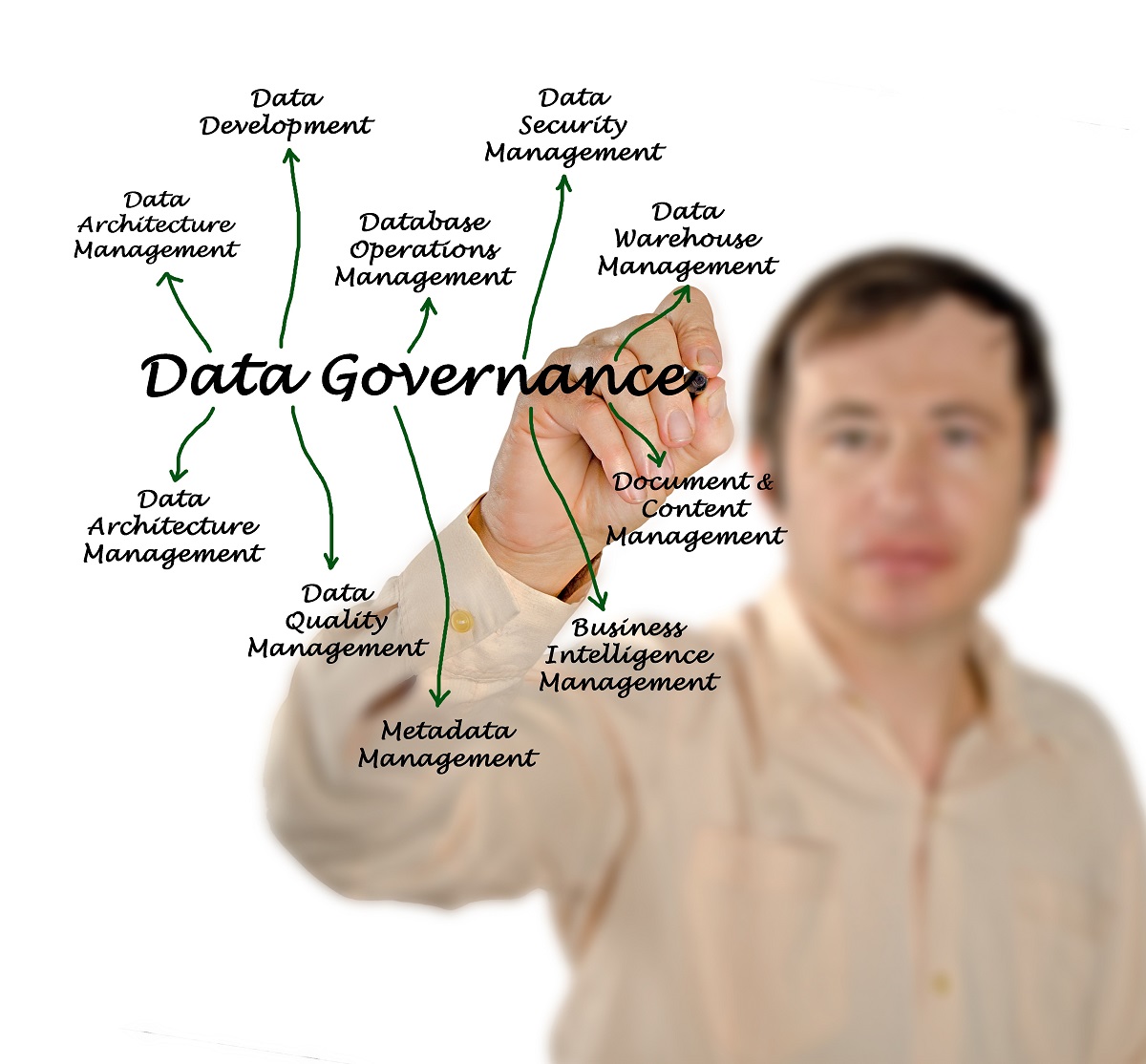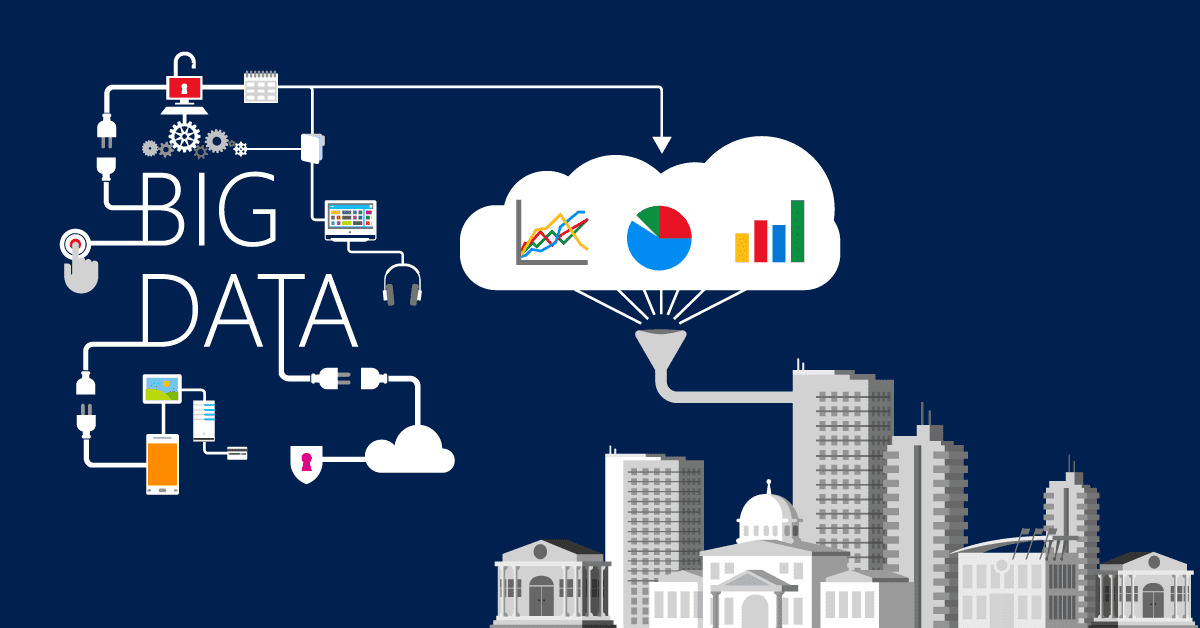Introduction
Data governance plays a crucial role in managing and leveraging the vast amount of data generated in the big data era. As organizations continue to gather and analyze large volumes of data, it becomes essential to establish processes and frameworks to ensure its quality, reliability, and compliance. Effective data governance enables businesses to make informed decisions, improve operational efficiency, and maintain regulatory compliance.
With the exponential growth of data, fueled by advancements in technology, organizations are grappling with the challenges of managing and harnessing its potential. Without proper data governance, companies can face data inconsistencies, security breaches, privacy concerns, and a lack of trust in the accuracy and integrity of the data they rely on.
Data governance encompasses the rules, processes, and standards that govern how data is collected, stored, managed, and utilized within an organization. It provides a framework for establishing roles, responsibilities, and accountability for data management, ensuring that data assets are appropriately protected, controlled, and utilized for maximum value.
In this article, we will explore the concept of data governance in the context of big data and its significance for organizations. We will discuss the key components of data governance and highlight best practices for implementing data governance in the big data landscape. Additionally, we will address the challenges organizations may face when implementing data governance and offer insights into overcoming them.
By understanding and implementing effective data governance strategies, organizations can unlock the true potential of their big data investments and derive actionable insights to drive business growth and innovation.
What is Data Governance?
Data governance refers to the overall management and control of an organization’s data assets. It encompasses the processes, policies, and practices that ensure data is effectively used, protected, and maintained throughout its lifecycle. Data governance provides a framework for establishing accountability, standardizing practices, and ensuring data quality, integrity, and security.
At its core, data governance involves defining and enforcing rules and standards for data management. This includes defining the roles and responsibilities of data owners, stewards, and custodians, as well as establishing processes for data collection, storage, access, and usage. By implementing data governance, organizations can ensure that data is consistently and accurately captured, stored, and utilized across the enterprise.
Data governance focuses on aligning and integrating data management objectives with business goals and regulatory requirements. It involves establishing policies and procedures to ensure compliance with data privacy regulations, such as the General Data Protection Regulation (GDPR) or the California Consumer Privacy Act (CCPA). Data governance also facilitates risk management by identifying and mitigating potential data-related risks, such as data breaches or unauthorized access.
Effective data governance promotes data quality by establishing data standards and data quality metrics. It ensures that data is complete, accurate, consistent, and reliable, enabling organizations to make informed decisions based on trustworthy data. Data governance also facilitates data integration and interoperability, enabling different systems and departments to share and use data effectively.
Furthermore, data governance recognizes the value of data as a strategic asset and promotes data monetization opportunities. It enables organizations to capitalize on the value of their data by facilitating data sharing, collaboration, and insights generation. By establishing clear ownership and accountability for data assets, data governance facilitates data-driven decision-making and empowers organizations to leverage their data for competitive advantage.
In summary, data governance is a comprehensive approach to managing and controlling data assets within an organization. It ensures data quality, compliance, and security, while also enabling data-driven decision-making and unlocking the full potential of data as a strategic asset.
Importance of Data Governance
Data governance is of utmost importance in the big data era, where organizations are inundated with massive volumes of data and face growing challenges in managing and leveraging it effectively. Here are key reasons why data governance is essential:
1. Data Quality and Accuracy: Data governance ensures that data is accurate, complete, consistent, and reliable. By establishing data quality standards, organizations can rely on high-quality data for decision-making, enabling better insights and improved business outcomes.
2. Compliance and Risk Management: Data governance helps organizations comply with data privacy regulations and industry standards. It ensures that data is protected, secure, and used responsibly, reducing the risk of breaches, fines, and reputational damage.
3. Data Strategy Alignment: Effective data governance aligns data management practices with overall business strategy. It ensures that data initiatives and investments support organizational goals, enabling better decision-making, innovation, and competitiveness.
4. Data Consistency and Integration: Data governance facilitates consistent data integration and interoperability across systems and departments. It establishes standardized processes and formats for data exchange, enabling better collaboration and data sharing.
5. Trust and Confidence: Data governance builds trust in data assets, both within the organization and with external stakeholders. When data is well-governed, decision-makers have confidence in its accuracy, leading to more informed decisions and stronger relationships with customers, partners, and regulators.
6. Cost Optimization: Proper data governance reduces redundancy, ensures efficient data storage and retrieval, and minimizes data-related risks. It helps organizations optimize costs associated with data management and eliminate unnecessary duplication or inefficiencies.
7. Data Monetization: Data governance enables organizations to capitalize on the value of their data by facilitating data sharing and monetization opportunities. When data is well-governed, organizations can derive valuable insights, create new revenue streams, and better serve their customers.
8. Organizational Alignment and Collaboration: Data governance establishes clear roles, responsibilities, and processes for data management. It promotes collaboration and cooperation across departments, ensuring that everyone understands and follows data-related policies and procedures.
In summary, data governance is essential for organizations to maximize the value of their data, ensure compliance, and make data-driven decisions. It provides a structured approach to data management, enabling organizations to harness the full potential of their data assets for strategic advantage and long-term success.
Components of Data Governance
Data governance comprises several key components that work together to establish a robust framework for managing and controlling the organization’s data assets. These components include:
1. Data Governance Framework: A data governance framework outlines the overall structure and guidelines for implementing data governance within the organization. It includes key elements such as policies, procedures, roles, and responsibilities, providing a clear roadmap for data management.
2. Data Governance Council: The Data Governance Council is a cross-functional group of stakeholders responsible for setting policies, making decisions, and providing oversight for data governance initiatives. The council typically includes representatives from different business units, IT, legal, compliance, and data management teams.
3. Data Stewardship: Data stewardship involves designating individuals or teams responsible for managing and maintaining specific data domains. Data stewards ensure data quality, integrity, and compliance by defining data standards, resolving data-related issues, and monitoring adherence to governance policies.
4. Data Policies and Standards: Data policies and standards serve as guidelines for data management activities. These include policies for data privacy, security, access, sharing, retention, and disposal. Standards establish the formats, definitions, and validation rules that ensure data consistency and interoperability across the organization.
5. Data Classification: Data classification involves categorizing data based on its sensitivity, criticality, and regulatory requirements. Classification helps determine the appropriate security controls, access privileges, and retention policies for different types of data, ensuring its protection and appropriate use.
6. Data Quality Management: Data quality management focuses on ensuring that data is accurate, complete, consistent, and reliable. It involves activities such as data profiling, data cleansing, data validation, and ongoing monitoring to maintain data quality throughout its lifecycle.
7. Metadata Management: Metadata management involves capturing and managing metadata, which provides information about the structure, content, and context of the data. Metadata includes data definitions, data lineage, data dependencies, and data usage information. Effective metadata management enhances data understanding and enables efficient data discovery and utilization.
8. Data Security and Privacy: Data security and privacy are critical components of data governance. Organizations must establish policies and controls to protect data from unauthorized access, breaches, and misuse. This includes implementing security measures such as encryption, access controls, data masking, and privacy safeguards to ensure compliance with relevant regulations.
9. Data Governance Metrics and Monitoring: Monitoring and measuring the effectiveness of data governance initiatives is essential. Key performance indicators (KPIs) and metrics should be defined to assess data governance maturity, data quality, compliance, and the overall success of the data governance program.
10. Data Governance Communication and Training: Effective communication and training are vital for promoting data governance awareness, engagement, and adoption across the organization. Regular communication of policies, practices, and updates, along with training programs, ensures that employees understand their roles and responsibilities in data governance.
In summary, the components of data governance work in harmony to enable organizations to effectively manage and control their data assets. Through a well-defined framework, clear policies, responsible stewardship, and continuous monitoring, data governance establishes the foundation for data quality, compliance, security, and utilization within the organization.
Best Practices for Data Governance in Big Data
Implementing effective data governance in the context of big data requires specialized approaches and considerations. Here are some best practices for data governance in the big data landscape:
1. Define Clear Governance Goals: Establish clear goals and objectives for data governance in alignment with the organization’s overall business strategy. Define the desired outcomes and identify the critical data areas that need governance to prioritize efforts effectively.
2. Involve Stakeholders from the Beginning: Engage stakeholders from various business units, IT, compliance, legal, and data management teams in the planning and implementation of data governance initiatives. Their involvement ensures diverse perspectives and helps create a sense of ownership and accountability.
3. Establish Data Governance Policies and Standards: Develop comprehensive policies and standards that address the unique challenges and requirements of big data. These should cover data quality, data privacy, data security, data classification, and data retention, among other areas, to guide data management practices effectively.
4. Develop a Data Governance Framework: Create a well-defined data governance framework that outlines the structure, roles, and responsibilities. This framework should delineate the decision-making processes, escalation paths, and communication channels for effective governance implementation.
5. Leverage Automation and Technology: Leverage automation tools and technologies to streamline data governance processes. This includes data discovery tools, metadata management tools, data lineage tracking, data cataloging, and data quality management tools, which can help automate governance tasks and enhance efficiency.
6. Implement Data Quality Management: Establish processes and controls to ensure data quality in big data environments. This involves data profiling, data cleansing, data validation, and ongoing monitoring of data quality to maintain accurate and reliable data for analysis and decision-making.
7. Emphasize Data Privacy and Security: Big data often involves sensitive and personally identifiable information. Implement robust data privacy and security measures, including data encryption, access controls, anonymization techniques, and compliance with relevant data protection regulations.
8. Foster Data Collaboration and Sharing: Encourage collaboration and sharing of data across different departments and business units. Establish data sharing agreements, data exchange protocols, and data governance controls to facilitate data discovery, utilization, and insights generation.
9. Establish Data Governance Metrics: Define key performance indicators (KPIs) and metrics to measure the effectiveness of data governance initiatives. Regularly monitor and assess the performance of data governance activities, data quality, compliance levels, and the impact on business outcomes.
10. Provide Ongoing Training and Communication: Conduct regular training programs and awareness sessions to educate employees about data governance policies, processes, and their roles in maintaining data quality and security. Foster a culture of data governance by promoting ongoing communication and collaboration.
By following these best practices, organizations can establish a strong foundation for effective data governance in the big data era. These practices ensure that the organization derives maximum value from its data assets while maintaining data quality, compliance, and security.
Challenges in Implementing Data Governance in Big Data
Implementing data governance in the context of big data presents unique challenges that organizations must navigate to ensure success. Some common challenges include:
1. Volume, Variety, and Velocity: Big data is characterized by its immense volume, varied data types, and high velocity of data generation. Handling and governing large volumes of diverse data at high speeds can strain traditional data governance frameworks and practices.
2. Data Quality Assurance: Ensuring data quality in big data environments is challenging due to the sheer volume and complexity of the data. Verifying the accuracy, completeness, and consistency of data becomes more difficult when dealing with unstructured and real-time data sources.
3. Lack of Standards and Integration: Big data often involves data from disparate sources, which may not adhere to standardized formats or structures. Integrating and governing data from these sources poses challenges in establishing common standards and ensuring data integration and interoperability.
4. Data Privacy and Security: Big data analytics often involve sensitive and personally identifiable information, raising concerns about data privacy and security. Ensuring compliance with data privacy regulations such as GDPR and CCPA becomes more complex when dealing with massive data volumes and multiple data sources.
5. Scalability and Infrastructure: The scalability of data governance solutions is crucial in big data environments. The infrastructure required to handle and govern large volumes of data needs to be scalable and flexible to accommodate data growth and evolving business needs.
6. Data Governance Roles and Responsibilities: Defining clear roles and responsibilities for data governance in big data environments can be challenging. With multiple stakeholders, data sources, and data domains, assigning ownership, stewardship, and accountability can become complex and require collaboration across different teams.
7. Cultural and Organizational Change: Implementing data governance often requires a cultural shift within the organization to prioritize data as a strategic asset and embrace data governance practices. Resistance to change, lack of executive buy-in, and organizational silos can impede successful implementation.
8. Data Governance Maturity: Many organizations have limited experience and maturity in implementing data governance for big data. Lacking adequate knowledge, skills, and expertise can hinder the effective implementation and management of data governance initiatives.
9. Data Discovery and Cataloging: Identifying, discovering, and cataloging big data assets can be challenging due to their sheer volume and diverse formats. Establishing comprehensive data catalogs that capture metadata, data lineage, and data dependencies becomes crucial for effective governance.
10. Governance for Unstructured Data: Big data often includes unstructured data, such as social media posts, images, and videos. Governing unstructured data requires innovative approaches and tools to extract meaningful insights while ensuring data quality, privacy, and compliance.
Overcoming these challenges requires a holistic approach that combines technology solutions, organizational alignment, and ongoing learning and adaptation. By addressing these challenges head-on, organizations can establish effective data governance practices in their big data initiatives.
Conclusion
Data governance is a critical discipline in the big data era, enabling organizations to effectively manage, protect, and leverage their data assets. With the rapid growth of big data and the increasing complexity of data sources, implementing data governance becomes essential for maintaining data quality, ensuring compliance, and driving data-driven decision-making.
Throughout this article, we explored the concept of data governance and its significance in the context of big data. We discussed the components of data governance, including the importance of a clear governance framework, data stewardship, policies and standards, data quality management, and data security. Additionally, we highlighted best practices for implementing data governance in the big data landscape, such as defining clear governance goals, involving stakeholders, leveraging automation, and emphasizing data privacy and collaboration.
Implementing data governance in the big data context is not without challenges. The volume, variety, and velocity of data, along with the lack of standards and integration, pose hurdles for effective governance. Data privacy and security concerns, scalability issues, and the need for cultural and organizational change further complicate the implementation process.
Overcoming these challenges requires a comprehensive approach that combines technological solutions, organizational alignment, and continuous learning and improvement. By addressing these challenges and implementing robust data governance practices, organizations can unlock the full potential of their big data investments, drive innovation, and gain a competitive edge.
In conclusion, data governance is not just a matter of compliance and control; it is an essential enabler for organizations to derive value, insights, and success from their big data initiatives. By embracing data governance best practices and overcoming the associated challenges, organizations can harness the power of their data assets and pave the way for future growth and innovation.

























